Slobot About Town LX:
 |
 |
Slobot visits the Spartanburg Regional History Museum!
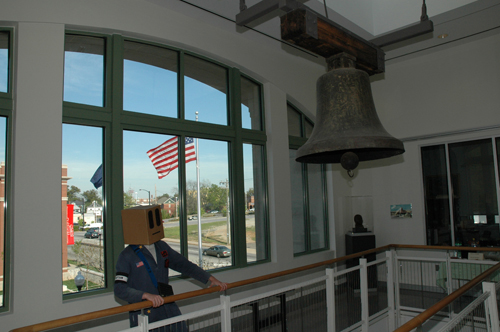
Slobot was wandering around the Chapman Cultural Center when he discovered a massive bell. Slobot soon learned that for 110 years the bell had been housed in the Riverdale Mill in Enoree, SC.
It called workers to the mill, sounded emergencies and rang out during public
celebrations. |
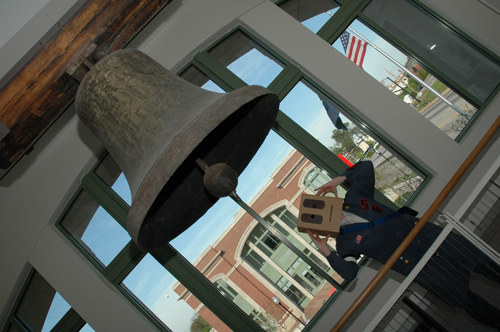
Slobot could only imagine the tintinnabulation of the bell!
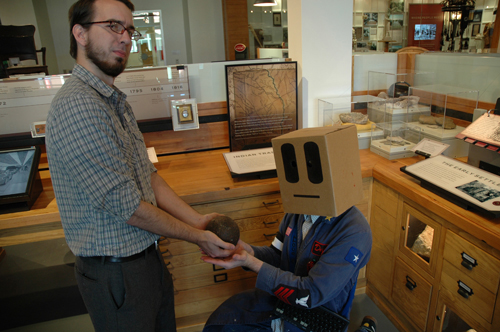
It was around then that a bearded stranger handed Slobot a Revolutionary War era cannonball! The bearded stranger introduced himself as Brad Steinecke, an employee of the Spartanburg County Regional Museum of History. |
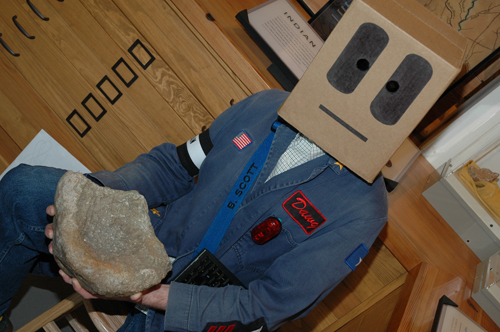
Brad showed Slobot one of the oldest artifacts in the museum, a soapstone bowl made by Cherokee or pre-Cherokee Indians of the backcountry. |
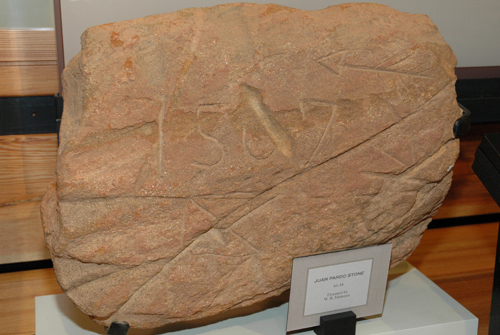
Brad then showed Slobot the Juan Pardo Stone. It was plowed up by an Inman farmer in 1934. |
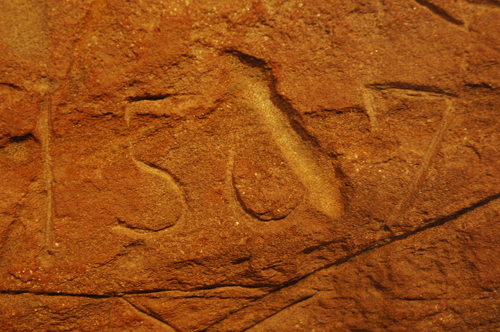
The stone is believed to have been a trail or boundary marker left by Juan Pardo's 1567 expedition into the Piedmont. |
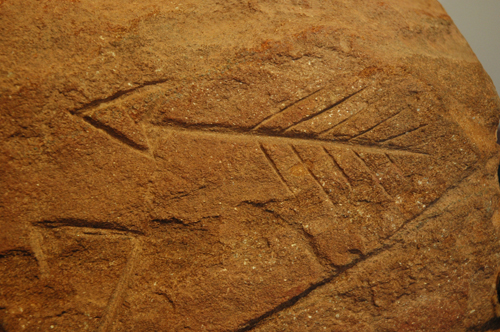
Spanish excursions in the backcountry would end in the following year when Spanish forces in the Carolinas were overrun by Native Americans. |
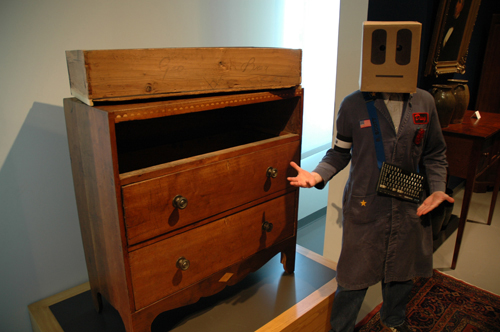
Brad also showed Slobot some backcountry home furnishings. Life in the backcountry in the Colonial and early American period was a hardscrabble one. |
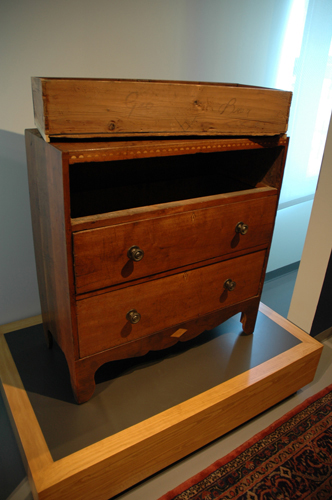
Itinerant craftsmen served the backcountry, bringing to various towns their crafts and services. |
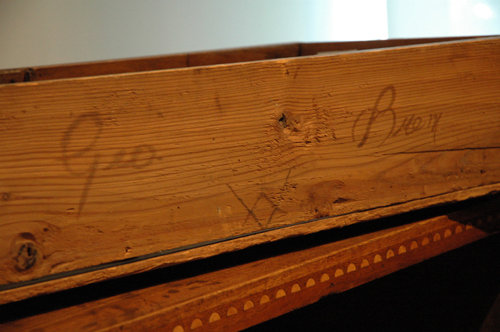
This dresser is thought to have been made by just one such itinerant craftsmen. His work is marked by a distinctive half-penny inlay. |
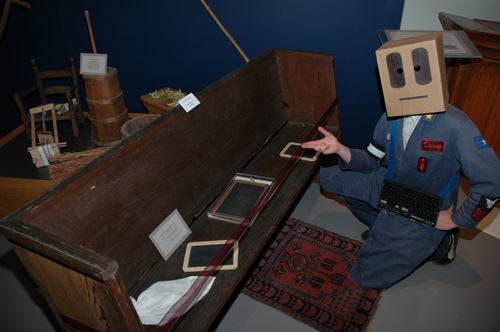
Nazareth Church is the oldest church in Spartanburg County, having formed in 1765. The current Nazareth Baptist Church was built in approximately 1832. This pew once sat in Nazareth Baptist Church and is thought to date to the 1830s. |
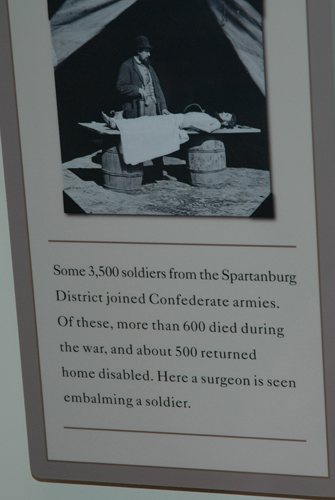
30-odd years later the nation would plunge into a full-fledged Civil War. Brad showed Slobot some of the artifacts the museum has from this era. |
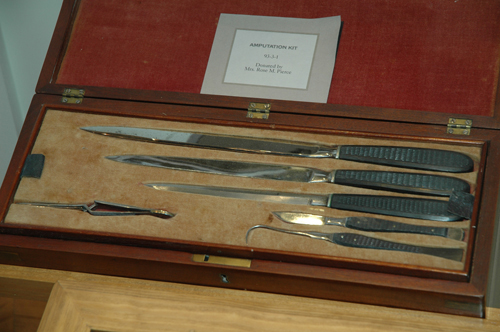
Slobot's favorite artifact from this era was this field amputation kit! Slobot was spooked to learn that the bone saw rested below the tray of knives. |
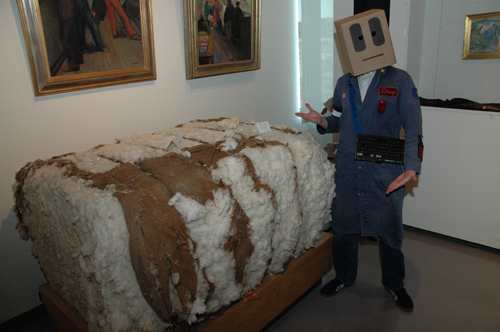
Cotton had long been king in the Carolina backcountry. This 500-pound bale of cotton dates to approximately 1902 and lingers on in the museum as a reminder of cotton's once mighty stature in the Piedmont. |
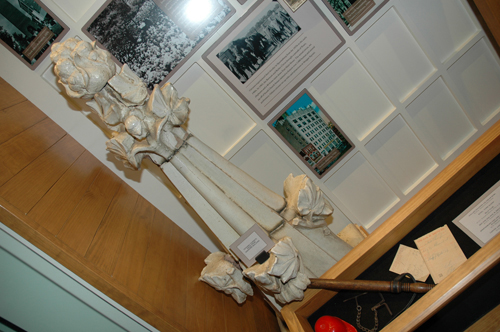
The 20th Century brought many changes to Spartanburg. By 1912 the city's first skyscraper, the Chapman Building, had been built. |
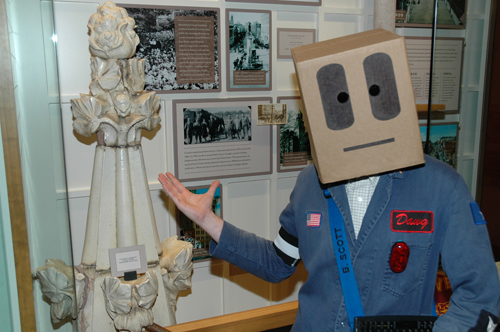
This is a ceramic cornice piece from the former Chapman Building. The Chapman Building (later named the Andrews Building) collapsed in 1977, killing 5 people. |
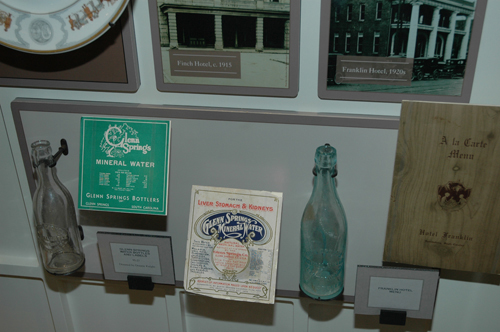
Glenn Springs was once a popular vacation destination in the upstate. Water was bottled from springs and a hotel, the Glenn Springs Hotel, was constructed at the site. The hotel burned down in 1941. |
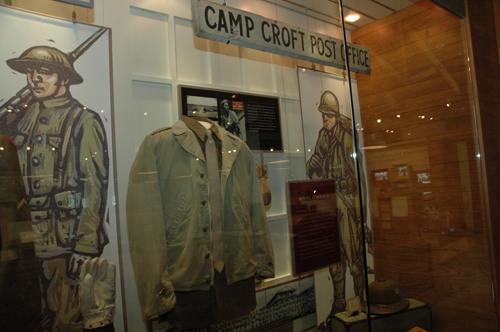
The museum is also home to artifacts from Camp Croft...
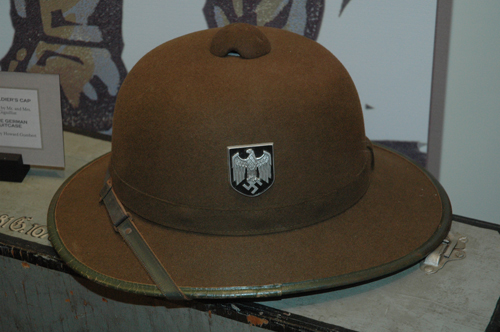
and from abroad.
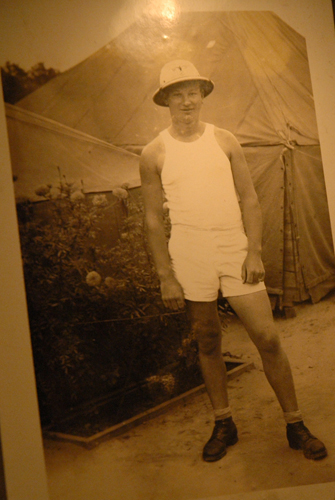
This photo is of a German POW held at Camp Croft. Stay tuned for Part 2 of Slobot's adventure at the Spartanburg County Regional Museum of History! Slobot would like to thank the Spartanburg County Regional Museum of History, Brad Steinecke, Mary Galbraith and YOU! |
